- Comics
- Comics Reviews
- Manga
- Comics Reviews
- European Comics
- News
- Comics News
- Press Releases
- Columns
- Spotlight
- Digital Comics
- Webcomics
- Cult Favorite
- Back Issues
- Webcomics
- Movies
- Toys
- Store
- More
- About
By Al Kratina
June 24, 2007 - 21:37
Since the company shipped the first issue of
Dark Horse Presents in July of 1986, Dark Horse Comics has been one of the comic book industry’s great success stories. From a single black and white anthology comic, the company has grown to the third largest comic book publisher in American, behind only industry giants Marvel and DC. But how did an upstart company, whose very name suggests its odds for success, manage to take such a large piece of the pie, and survive through the comic book boom and bust of the 1990s? The simple answer is that they filled the void left by the two majors. They were adult without having to be ship their books in brown paper envelopes, mature without printing accounting information and stock tips. By providing varied output, they appealed to readers who, perhaps not entirely disillusioned by Batman’s perpetually petulant frown, or Superman’s newest struggle with the outsider metaphor, were at least looking for something different. Dark Horse stepped up to the plate, and within a few years, they were providing content that sated a wider variety of appetites. Dark Horse’s 1993 foray into the costumed superhero line illustrates this point; the line quickly failed, demonstrating that while the quality of the creators and storytellers involved in the books was important, the fact that Dark Horse offered something different was equally integral to the company’s success.
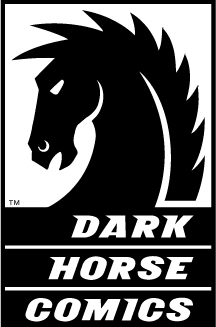
What follows is a list of some of Dark Horse’s most important and successful titles. Not all of the books are great, and not all may be familiar to all readers, but each had some sort of impact upon Dark Horse, and the comic book industry in general.
Dark Horse Presents
:
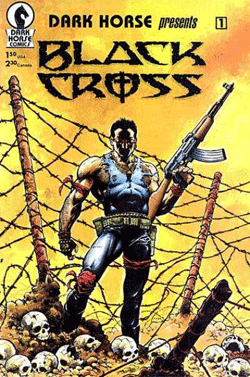
The history of this comic is long and winding enough to deserve an article in its own right. So, I’ll write one later. In short, however, this was Dark Horse’s first publication, in July of 1986. The black and white anthology managed to last 157 issues despite the fact that most people relate black and white either to incomprehensibly unfunny Peanuts comic strips or those Three Stooges shorts your father used to make you stay up and watch on Turner Classic Movies when all you wanted to do was hide in the bathroom with a Sears bathing suit catalogue. The first issue of Dark Horse Presents featured the debut of Paul Chadwick’s Concrete, which later spun off into its own series. Frank Miller’s Sin City was also first featured in these pages. The anthology featured a mix of new and established creators, and was, as such a thing might imply, a hit and miss affair. Still, when it finally came to an end in September of 2000, it was Dark Horse’s longest running title.
Concrete
:
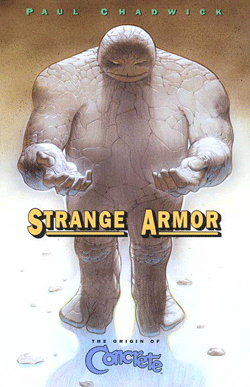
Paul Chadwick’s creation, a human who has his brain transplanted by aliens into an enormous body made from a concrete-type substance, shipped the first issue of its own series in March of 1987. The series, which focused more on character than on action, featured no super-villains and a lead character that was just like everyone else. Except that he looked kind of like a stone version of the Stay-Puft Marshmallow Man and he worked as a speechwriter for a US Senator. So, he’s like everyone else who happens to be petrified and have a Masters in Public Relations. Chadwick’s human touch, and the increasing interest in environmentalism exhibited in the book, helped make the various Concrete miniseries early hits for Dark Horse, and led to 26 Eisner awards for the series during its run. The series hasn’t really been in the spotlight for a while, but it’s certainly the highlight of Dark Horse’s early years, and well worth a look.
Aliens/Predator
:
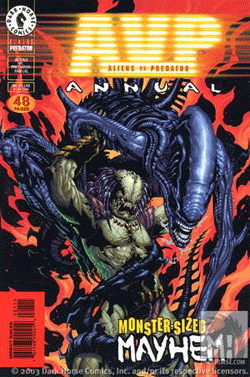
Another very successful move for the company during its formative years was its acquisition of movie licenses. Correctly predicting that the bloodlust James Cameron’s Aliens incited in the geek community would translate well into comic book sales, Dark Horse continued the adventures of Newt and Hicks from the film into three mini-series, promptly changing the character names in reprints when Alien 3 completely de-canonized the comic book storyline. The Aliens stories weren’t necessarily well-written, but they tapped into a pre-existing market, and once the Predator franchise was acquired, the books’ respective authors had the brilliance to combine the two into Aliens Vs. Predator, one of the most successful licensed franchises in comics. This first issue was released in November of 1989, and shipped 400 000 copies. This pairing let to several AvP series, Aliens Vs. Superman, Aliens Vs. Predator/Witchblade/Darkness/Speedball/Rocket Racer, Aliens Vs. Batman/Predator/Groo, Aliens Vs. Barbara Walters, the two-page Predator Vs. E.T., and several other titles which I’m probably making up by now. While the series was successful, it often fell prey to the concept being more interesting than the execution, with many of the mini-series failing to distinguish themselves creatively.
Star Wars
:
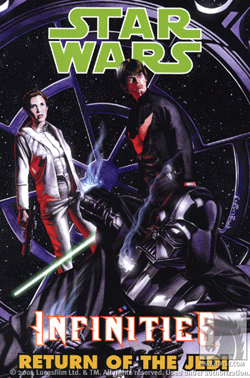
The company’s licenses, however, are not limited to Aliens and Predator, though they to tend to skew towards the sort of things one goes to conventions dressed up as an idiot for. Dark Horse’ first Star Wars title, Star Wars: Dark Empire, was published in December of 1991, and quickly led to an entire rainforest’s worth of comics. Again, some are good; some get by on branding alone. Among the more notable writers who have worked on the franchise in some way, shape or form have been the aforementioned Paul Chadwick, Peter David, Andy Diggle, Garth Ennis, Bruce Jones, Ron Marz, Alan Moore, and Steve Niles. And from the numerous titles, mini-series, and one-shots, some of the more popular have been the manga adaptations of episodes 1, 4, 5, and 6, the ongoing Star Wars: Tales series of short comic stories, and the controversial Infinities series, in which alternate version of the events in the three original films are explored. Alan Moore’s stories in the Star Wars: Devilwords series are of special note, as well.
Frank Miller:
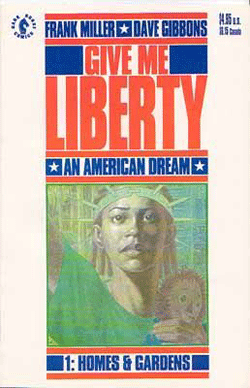
No discussion of Dark Horse’s major releases would be complete without a mention of Frank Miller. Miller, despite having severely limited his output over the past few years to, of all things, supervising a Robocop miniseries, is quite the golden boy at the moment, with films based on his comic book work turning a tidy profit for movie executives. While Miller made his name writing for Marvel and DC, his Dark Horse projects are proving to be the most adaptable to the big screen.
Following that, of course, came
Sin City, which was originally serialized in
Dark Horse Presents. The series, an extreme, exaggerated riff on film noir, is quite hopefully a parody of the genre, though later mini-series seem to get lost in the same grim seriousness that occasionally turns Miller’s writing into overbearing macho ranting. Nevertheless, the first few volumes in the
Sin City series are rich, beautiful reads, strikingly illustrated and sickeningly amusing.
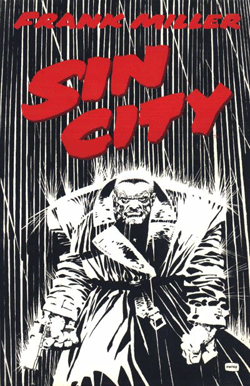
Other Miller books released by Dark Horse include
Big Guy And Rusty The Boy Robot, another collaboration with Geof Darrow that, while lasting only two issues, spun off into a successful animated television series. The comic is somewhat brief, shallow yet fun, but the series examined the characters in more depth.
300, Miller’s retelling of the Battle of Thermopylae, has been written about so much since the release of the Zack Snyder-directed film this year that’s it’s pointless to say more than the comic book, like the film, is fairly empty and relies more on style than substance, though the style is certainly impressive.
Next week, the critical examination of Dark Horse’s major books continues with Grendel, Hellboy, Dark Horse’s Manga output, Tale of One Bad Rat, and Monkeyman and O’Brien!